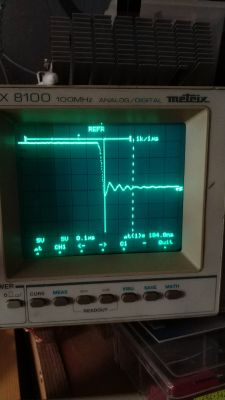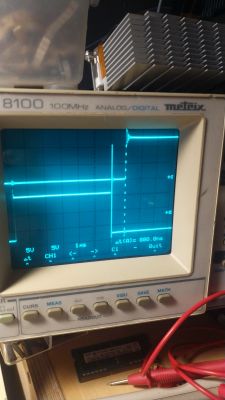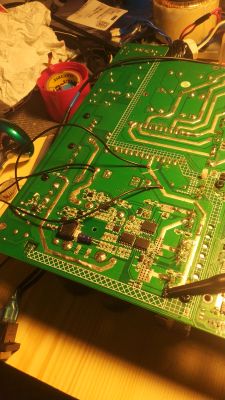Another problem for me is the GBU2506SF bridge, has anyone seen similar Schottki bridges to buy?

Czy wolisz polską wersję strony elektroda?
Nie, dziękuję Przekieruj mnie tampopej wrote:. I recommend that you read the manufacturer's application notes carefully.in farnell GBU2506 F.
aaanteka wrote:There is a fundamental difference between the GBU2506 SF andpopej wrote:. I recommend that you read the manufacturer's application notes carefully.in farnell GBU2506 F.
GBU2506SF Reverse Recovery Time trr 40-50 ns (SF- for "Super Fast")
GBU2506F " Single phase, half wave, 60Hz , resistive or inductive load. trr ?1500ns "(F-insulated housing)
It is easy to distinguish products by price.
aaanteka wrote:There are originals.
They even visit Polish auction sites.
popej wrote:going to make a bridge on DSEP29-06A diodes
aaanteka wrote:And where will you put it in this amplifier?
aaanteka wrote:A little willingness and everything can be found.popej wrote:going to make a bridge on DSEP29-06A diodes
And where will you put it in this amplifier?
(?? ?? ?? ?? ?? ?? -'Ultra-fast rectifier bridge with energy recovery ' )
On the other hand, someone who has doubts about the parameters of this bridge, has a minimum qualification to repair such a device?
Link
popej wrote:note, I finally found a quick bridge in google, I can also enter it, you wrote that you saw it available somewhere, and not a link to google, you send so much that none of them meets the specifications
Szymek11211 wrote:Thanks for the documentation, although there is no such bridge anywhere to buy. I think you would have to write to the Chinese asking this company only to buy them ...
popej wrote:and so after reviewing about 1k applications from different directories, the only replacement that I found more closely resembled GBUE2560
popej wrote:Quite similar, it has worse parameters and it should be assumed that it will perform poorly in this application.the only similar replacement I found is GBUE2560
Szymek11211 wrote:Why weird? The problem is that these types of elements are mostly available in production quantities to order. And this is one of the many reasons why an amateur repair of such an amplifier is practically impossible and certainly not profitable.from various even and strange Chinese sides and from commercially available transmitting bridges
aaanteka wrote:and certainly not profitable.
popej wrote:without capacitors and transformers can be folded for PLN 250 and the problem is only with the availability of this bridge, but doing it on the diodes is about PLN 50, so it will be 300 k together
aaanteka wrote:The only thing is that those who can fix it right away have been on the market for years, and the product is already slightly old and has a shameful history among users. Hardly any serious acoustician, sound director or even a DJ decides to repair this amplifier, let's add a costly repair. If someone tries to repair this equipment based on commonly available components in the retail trade for a total amount of less than 1/2 of the market value of this amplifier, he is hoeed to the sun and is incorrect optimists. For this reason, we gave up in my company. But I don't want to confuse you, it's all ahead of you, colleagues.
popej wrote:in my amplifier I got a copy in which, apart from the power supply, I had only one transistor and one mosfet in the amplifier
popej wrote:Pany will anyone give the exact voltage of this traf?
ziro_9 wrote:The voltages on individual stages (measured at 230VAC ZAS) are:
P + - 30V
1H + - 62V
2H + - 125V
3H + - 188V
popej wrote:'Cause it's already boiled again




Szymek11211 wrote:Does anyone know where to look for the reasons in the direct voltage at the output in the vicinity of 80-100mV? On working, unrepaired channels, I have around 40mv, including the same, although the amplifier supposedly works normally on 2 pairs of symmetrical voltages and most of the smd semiconductors have already been checked. Transistors paired in this channel, I even changed to sets with a heat sink from other channels, the voltages were the same
